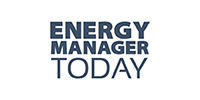 Vanadium redox flow batteries (VRFBs) are a front-runner technology for meeting the growing demand in the energy storage sector, says Bushveld Energy CEO Mikhail Nikomarov.
Vanadium redox flow batteries (VRFBs) are a front-runner technology for meeting the growing demand in the energy storage sector, says Bushveld Energy CEO Mikhail Nikomarov.
During a webinar on energy storage this week, he noted that data by US-based multiservice professional firm Navigant shows that VRFB demand is expected to increase to over 18 000 MWh by 2027.
However, keeping market researcher BMI Research’s suggested 25% market share in mind, Nikomarov on Tuesday noted that this could increase to over 27 500 MWh by 2027.
If these forecasts hold true, 82 000 t of vanadium will be needed just for VRFBs, he said. Taking the BMI forecast into account, this could increase to over 96 000 t.
“This is a significant demand, and actually presents us with an upside,” he said.
Nikomarov said VRFBs offered clear advantages, both technically and financially, which “sets it apart in large-scale stationary applications”.
Despite vanadium’s limited share in current markets, the demand for vanadium – which offers future opportunities in consumer and mobile energy storage – remains underwritten by the steel market.
Existing demand from the steel and chemicals markets, Nikomarov said, implies a compound annual growth rate (CAGR) for vanadium demand of 2.5% from 2017 to 2027.
The high dependence of VRFB on vanadium may increase this demand CAGR to 8.4%, he added.
Supporting this growth, is the industry’s optimism surrounding VRFBs.
Counting in the battery technology’s favour, he highlighted, was the evolution of energy storage cases that are “actually what a vanadium battery does”, which is longer duration and multiple purposes from one battery; as well a reduction of cost and consolidation.
Nikomarov also pointed out that the technology has Chinese political support, which is leading to greater VRFB deployment in Asia, compared with other regions.
read more
 New York is crafting one of the most ambitious energy storage targets in the nation, but major barriers could make it difficult to meet the target, according to a recent filing with state regulators by storage developer GI Energy.
New York is crafting one of the most ambitious energy storage targets in the nation, but major barriers could make it difficult to meet the target, according to a recent filing with state regulators by storage developer GI Energy. MidAmerican Energy Company has announced plans to install a utility-scale battery energy storage system, enabling a utility to store electricity for later use. The battery project provides four megawatt-hours of storage capacity and can supply 1 MW of power for up to four hours. One megawatt of electricity is enough to power about 900 average Iowa homes.
MidAmerican Energy Company has announced plans to install a utility-scale battery energy storage system, enabling a utility to store electricity for later use. The battery project provides four megawatt-hours of storage capacity and can supply 1 MW of power for up to four hours. One megawatt of electricity is enough to power about 900 average Iowa homes. Two reports released within days of one another have highlighted the increasing value of the energy storage market as a necessary tandem to a low-carbon society, with Bloomberg New Energy Finance predicting the market will grow to attract $1.2 trillion in investment and boast 942 gigawatts (GW) by 2040, while in the UK the current pipeline already sits at an impressive 6,874 megawatts (MW).
Two reports released within days of one another have highlighted the increasing value of the energy storage market as a necessary tandem to a low-carbon society, with Bloomberg New Energy Finance predicting the market will grow to attract $1.2 trillion in investment and boast 942 gigawatts (GW) by 2040, while in the UK the current pipeline already sits at an impressive 6,874 megawatts (MW). A proposal by Pacific Gas & Electric (PG&E), one of California’s three main investor-owned utilities (IOUs) to deploy large-scale energy storage to replace peaking natural gas plants has been approved by the state’s regulator.
A proposal by Pacific Gas & Electric (PG&E), one of California’s three main investor-owned utilities (IOUs) to deploy large-scale energy storage to replace peaking natural gas plants has been approved by the state’s regulator. Amazon is turning to Tesla in order to deploy energy storage capacity at their distribution centers.
Amazon is turning to Tesla in order to deploy energy storage capacity at their distribution centers. Bloomberg NEF says the tumbling cost of batteries is set to drive a boom in the installation of energy storage systems around the world in the years from now to 2040. This has led BNEF to significantly increase its forecast for global deployment of behind-the-meter and grid-scale batteries over coming decades. The group now predicts the global energy storage market will grow to a cumulative 942GW/2, 857GWh by 2040, attracting $1.2 trillion in investment over the next 22 years.
Bloomberg NEF says the tumbling cost of batteries is set to drive a boom in the installation of energy storage systems around the world in the years from now to 2040. This has led BNEF to significantly increase its forecast for global deployment of behind-the-meter and grid-scale batteries over coming decades. The group now predicts the global energy storage market will grow to a cumulative 942GW/2, 857GWh by 2040, attracting $1.2 trillion in investment over the next 22 years. The global energy storage market is on the cusp of a long-running investment and deployment boom, according to one of the world’s most influential energy analysts.
The global energy storage market is on the cusp of a long-running investment and deployment boom, according to one of the world’s most influential energy analysts. The tumbling cost of batteries is set to drive a boom in the installation of energy storage systems around the world from now to 2040, according to the latest annual forecast from research company Bloomberg New Energy Finance (BNEF).
The tumbling cost of batteries is set to drive a boom in the installation of energy storage systems around the world from now to 2040, according to the latest annual forecast from research company Bloomberg New Energy Finance (BNEF).
Recent Comments